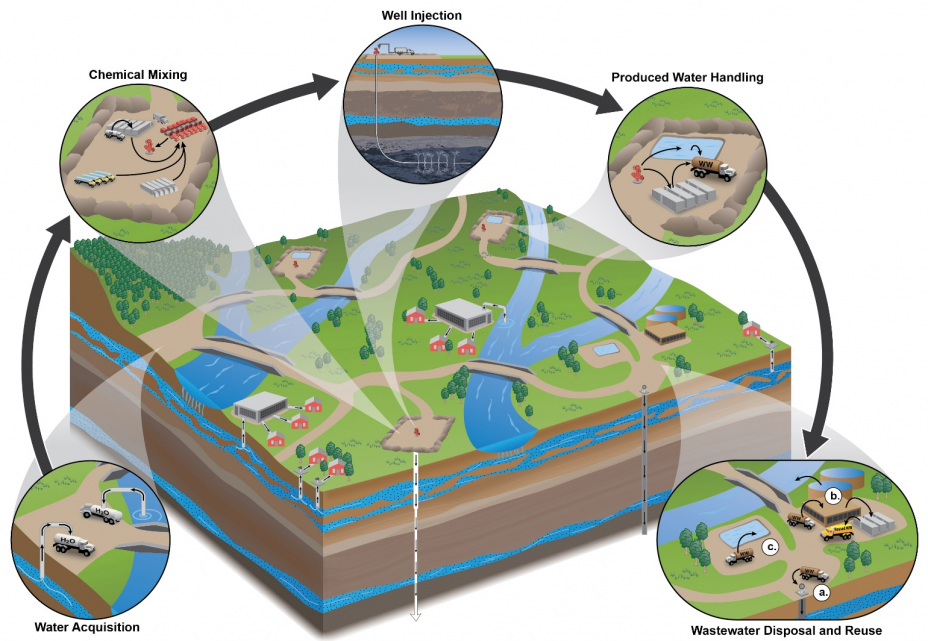The Hydraulic Fracturing Water Cycle
EPA studied the relationship between hydraulic fracturing for oil and gas and drinking water resources using the hydraulic fracturing water cycle (see figure). The hydraulic fracturing water cycle has five stages: each stage is defined by an activity involving water that supports hydraulic fracturing. The stages and activities of the hydraulic fracturing water cycle include:
Read the executive summary.
Stage 1: Water Acquisition
The withdrawal of groundwater or surface water to make hydraulic fracturing fluids.
Stage 2: Chemical Mixing
The mixing of a base fluid, proppant, and additives at the well site to create hydraulic fracturing fluids.
Stage 3: Well Injection
The injection and movement of hydraulic fracturing fluids through the oil and gas production well and in the targeted rock formation.
Stage 4: Produced Water Handling
The on-site collection and handling of water that returns to the surface after hydraulic fracturing and the transportation of that water for disposal or reuse.
Stage 5: Wastewater Disposal and Reuse
The disposal and reuse of hydraulic fracturing wastewater.

